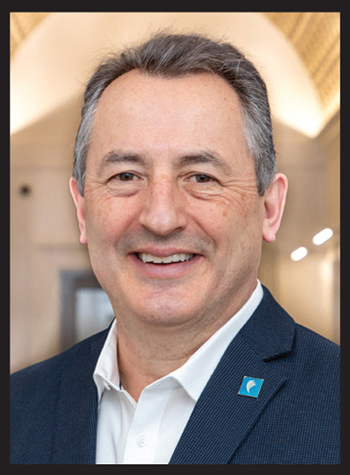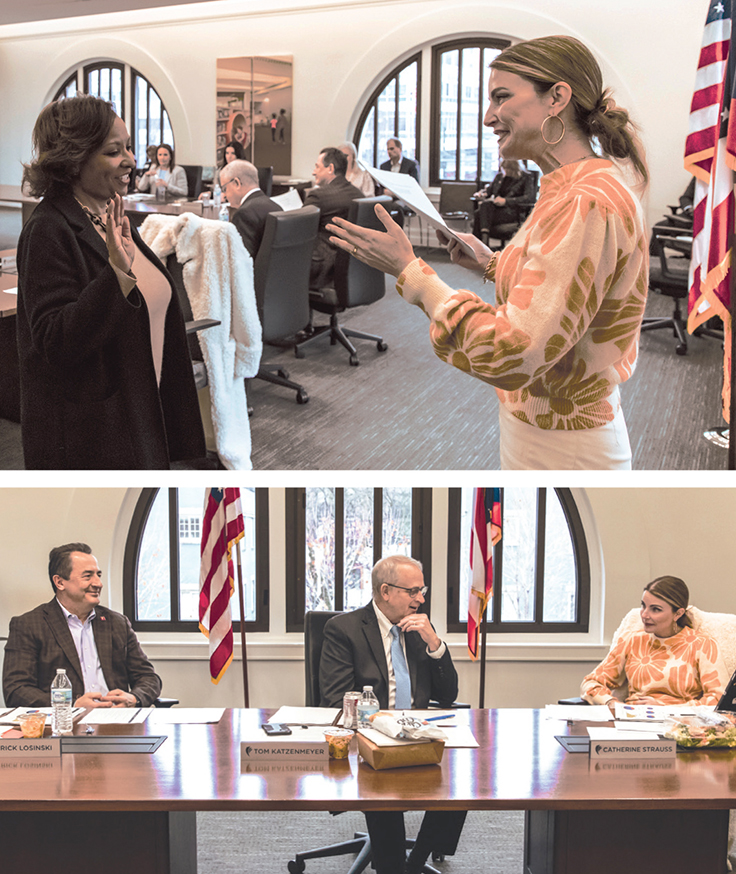Engaging Trustees in Executive Development: A Collaborative Model for Succession Planning
Executive leadership development is imperative for the future of any organization, and this was especially pertinent to Columbus Metropolitan Library as my retirement announcement grew closer. I decided to strategically tap the expertise of our library board of trustees because of their external organizational perspectives on talent management.
 |
Pat Losinski, Chief Executive Officer of Columbus Metropolitan Library, OH |
At Columbus Metropolitan Library (CML), our commitment to developing our people goes well beyond training and annual performance evaluations. This is especially true at the executive level, where the leadership needs are complex, and training and coaching should be tailored to the individual. Executive leadership development is imperative for the future of any organization, and this was especially pertinent to CML as my retirement announcement grew closer. I decided to strategically tap the expertise of our library board of trustees because of their external organizational perspectives on talent management.
With that timeline in mind, several years ago I engaged our board in the development process of our four highest chief executives (C’s), who report directly to me: Chief Financial Officer, Chief Customer Experience Officer, Chief Diversity Equity and Inclusion Officer, and Chief Community Engagement Officer.
SECURING BOARD BUY-IN
During my annual performance evaluation and goal-setting, I asked our seven trustees to
reflect upon, and then independently answer, two questions about each of our four C’s:
- Based upon your perspective, what are one to three areas of potential growth and development for each C?
- What are the recommended experiences, responsibilities, or resources the CEO could offer to each to address and help with their development opportunities?
I did not define what the trustees’ perspective should be; instead, I suggested that their feedback could come from presentations each C had delivered at library board meetings, the overall effectiveness of each leader’s assigned areas of responsibility, or even the trustees’ observations of their interactions with stakeholders at library functions and community events.
Having the trustees answer these questions independently was intentional, as I wanted to be sure to capture their unique perspectives, even if they diverged from others on the board. Fortunately, we saw consistency in their feedback. Each C was then given a compilation of the trustee input about them: one page describing areas of possible development and one page of recommendations for addressing the collectively perceived development needs.
EXECUTIVE TEAM ENGAGEMENT
Next, I asked each member of my executive team to take a few weeks to reflect on the trustee input and return for a discussion with me. I offered minimal commentary on both the development feedback and the suggested recommendations for growth, because I wanted each C to contemplate how they could make the input most meaningful to their personal development ideas and plans. We then determined a course of action over the year, which included activities and/or goals such as: attending an executive development program, working with a coach, improving executive presence, honing presentation and speaking skills, or obtaining a certification. There were limits on the costs and the time provided for skill development, but as I met with each C we quickly focused on practical and reasonable plans that could fit into our budget and their schedules—without compromising the annual deliverables for their assigned areas of responsibility.
MAKING CONNECTIONS
At the next library board meeting following the completion of the individual development plans, I asked the trustees for one more commitment: individually spend 60 to 90 minutes with each of the four C’s over the course of the next 11 months. It could be done over coffee, breakfast, lunch, an office meeting, or some other activity—whatever their preference. I envisioned that during this investment of one-on-one time, they would learn more about our executive team, more about me, and more about CML. While all of that did indeed happen, I could not have anticipated just how much this commitment of time personally meant to each of our C’s.
Like most high-performing boards, CML’s trustees are accomplished and very busy in their professional roles, civic involvement, and family obligations. One of our trustees is the CFO of a Fortune 100 company with 26,000 employees, and he made the time to participate in the individual meetings. Having 100 percent participation from the trustees was important to me, as it would give each of them and our leadership team an opportunity to really get to know one another, which is valuable to the organization. The meetings helped to strengthen relationships, enhance trust and respect, and expand knowledge for both our trustees and the executive team. Our C’s felt more valued and appreciated by individual trustees and the board as a whole. Equally important, the trustees gained a stronger appreciation for the dedication, professionalism, and personalities of our executives.
Throughout the year, I regularly checked in with each C to hear how they were progressing in their development and to offer
feedback when appropriate. At year end, each member of my team provided an executive summary of their work on the feedback and suggestions offered by the trustees. I shared the four summaries with our trustees and held a discussion with them on possible next steps.
 |
CML’S BOARD OF TRUSTEES (top) Board members Carla Williams-Scott and Catherine Strauss; (bottom) Pat Losinski listens in as board members Tom Katzenmeyer and Strauss discuss an issue in a public meeting. Photos courtesy of Columbus Metropolitan Library |
A FOUNDATION FOR SUCCESS
As a long-tenured CEO, I had the benefit of strong relationships with both trustees and C’s. Still, it was important to set the tone with each group, answer questions, and offer strategic facilitation. Our trustees and C’s put in the hard work—I believe my connection with each person helped ease early apprehensions, which ultimately led to a successful overall effort. Admittedly, our table of organization and reporting structure made this exercise possible, since we have four executives who oversee all functional areas such as marketing, property management, finance, and human resources. It would be challenging to replicate this exercise if a CEO had a large executive team with many direct reports.
All of this work aligned with one of CML’s internal strategies: Our People—Grow our Team for Maximum Potential. With daily responsibilities and priorities, it can be challenging to consistently demonstrate the investments we make in our team. This trustee-assisted development and succession exercise highlighted our commitment in a meaningful way.
GROWTH FOR THE FUTURE
What will happen next? Our goal is that each member of the executive team will continue to raise their skill level and look for ways to creatively grow their respective teams. Our approach to succession planning has never been about predetermining who will be promoted for a scheduled or surprise vacancy. Rather, we focus on the individual and prepare them to compete for internal opportunities and, if desired, achieve career growth outside of CML. Former employees often express appreciation for the development opportunities offered at CML even when they have accepted a role elsewhere.
Time will tell how CML’s focus on leadership development impacts the career journeys of our C’s—and what that might mean for CML. Thanks to the dedication and commitment of our trustees, our C’s are better prepared to reach their potential and pursue their career aspirations. For the trustees, the process has made them more attuned to the substantive contributions they can make to strengthen our team and given them deeper insight into the leadership skills and competencies that are most important to CML’s future success.
| For more on what happens when directors leave, see “Who’s Next?: What Happens When Longtime Library Leaders Retire” |
Pat Losinski is the Chief Executive Officer of Columbus Metropolitan Library, OH. He previously served as Executive Director of Pikes Peak Library District, CO, and was director at two other public library systems in Illinois and Ohio. He served on the state library boards of Illinois and Colorado, as board chair of the Urban Libraries Council, and as a governing board member of the International Federation of Library Associations. He announced his retirement in April.
RELATED
ALREADY A SUBSCRIBER? LOG IN
We are currently offering this content for free. Sign up now to activate your personal profile, where you can save articles for future viewing









Add Comment :-
Comment Policy:
Comment should not be empty !!!